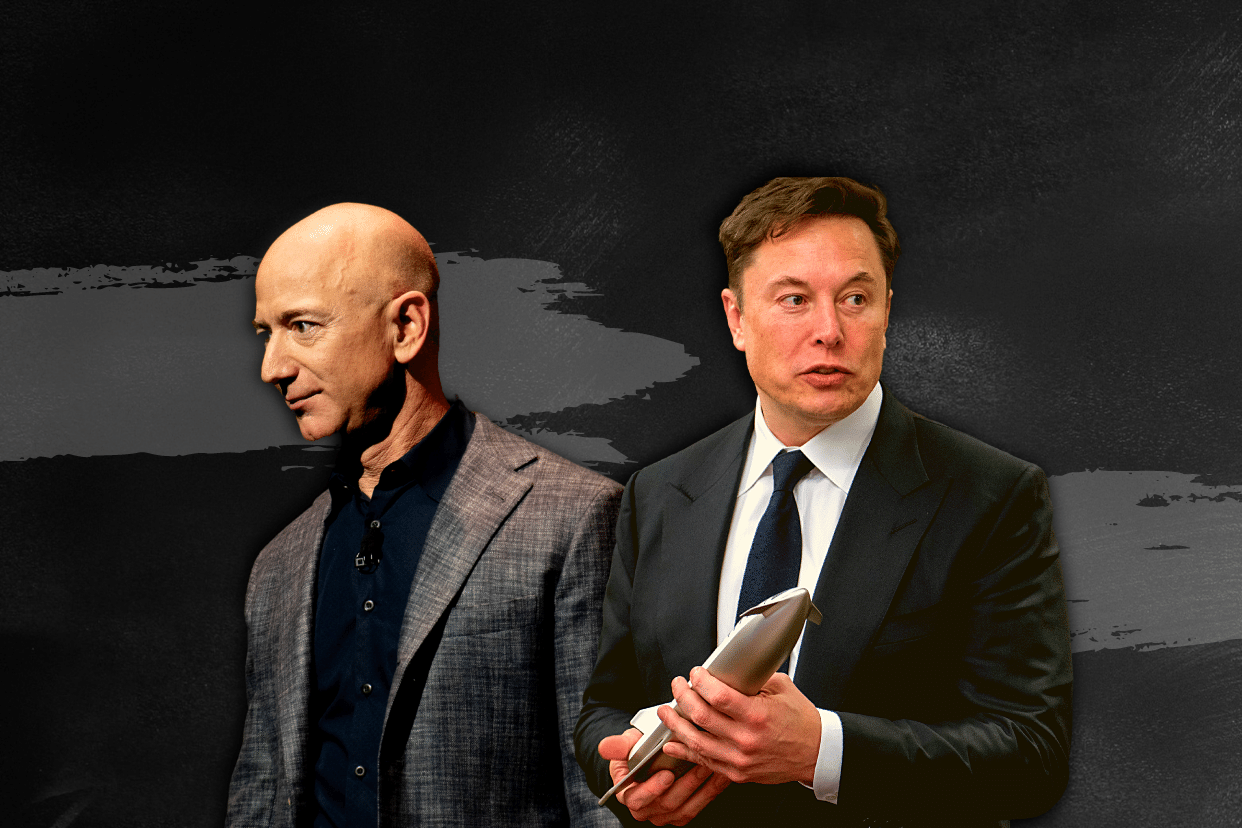
In a dramatic move that signals Amazon’s serious ambitions to disrupt the global internet infrastructure market, the company has launched its first batch of satellites for Project Kuiper, a groundbreaking initiative aimed at bringing internet connectivity to every corner of the world, particularly in underserved and remote areas.
On April 28, 27 satellites were launched into space aboard an Atlas V rocket, marking a key milestone for Amazon’s satellite internet project. The launch, which took place at the Cape Canaveral Space Force Station in Florida, represents the beginning of a highly ambitious endeavor that is expected to rival SpaceX’s Starlink system, which already boasts a user base of 4.6 million people worldwide.
While SpaceX has been steadily advancing its Starlink network over the past few years, Project Kuiper has the potential to revolutionize global internet access. Amazon’s goal is not just to provide basic internet services but to create an economic ecosystem that leverages low Earth orbit (LEO) satellite constellations to generate substantial revenue streams from industries ranging from telecommunications to space tourism. With the space industry rapidly growing, Musk’s Starlink, which currently dominates the LEO satellite market, is facing a formidable challenger.
The satellite constellation for Project Kuiper is expected to include around 3,200 satellites, initially operating at an altitude of approximately 450 kilometers above Earth’s surface. This is slightly lower than the altitude of Starlink’s satellites, which operate at around 550 kilometers. Despite the clear advantages that lower orbital altitudes bring, including reduced latency, Amazon faces significant challenges in catching up with SpaceX, especially in the early stages of its deployment.

Industry analysts are concerned that Amazon may have entered the space race too late, with Craig Moffett, a senior analyst at MoffettNathanson, stating that it will take a considerable amount of time and effort for Project Kuiper to gain meaningful market share. He also cautioned that Amazon might have arrived too late to make Kuiper a truly attractive investment. The technical challenge of deploying thousands of satellites into low Earth orbit is monumental. Each satellite must operate in close coordination with others in the constellation to ensure stable internet connections and avoid collisions.
Additionally, the expense of building, launching, and maintaining these satellites is staggering. Initial estimates suggest that the first phase of Project Kuiper, involving the deployment of 3,200 satellites, could cost upwards of $17 billion. This figure highlights the immense financial commitment required for such an ambitious project, with further investments necessary to ensure long-term viability.
One of the key advantages of both Starlink and Kuiper is their use of low Earth orbit satellites, which drastically reduce the latency of internet connections. Traditional satellite internet systems rely on geostationary satellites, which orbit much higher at around 35,786 kilometers. The distance and position of these satellites introduce significant signal delay, which is particularly noticeable in applications such as video conferencing, gaming, and real-time data transmission.
In contrast, low Earth orbit satellites offer a much lower latency, making them ideal for applications that require fast, real-time communication. Starlink has already proven the effectiveness of this technology by providing internet to rural households, connecting airplanes, and even facilitating communication for astronauts aboard the International Space Station.
:max_bytes(150000):strip_icc():focal(359x369:361x371)/jeff-bezos-elon-musk-090722-8d1b0d178018463e968a3d39480f263a.jpg)
However, while SpaceX’s Starlink has already seen widespread adoption, Project Kuiper still faces significant hurdles. Despite Amazon’s technological prowess and substantial resources, competing with SpaceX’s established infrastructure and user base will require substantial effort.
The potential benefits of Project Kuiper are vast. If Amazon succeeds in deploying its satellite network and creating a sustainable business model, it could change the way people access the internet across the globe. Kuiper has the potential to provide affordable, high-speed internet to regions where terrestrial broadband infrastructure is either inadequate or nonexistent.
This includes rural areas in developed countries and remote regions in the developing world. Beyond basic internet access, Kuiper could also drive growth in industries like space tourism and global communication, providing the connectivity needed to support a thriving space economy.
Despite the potential rewards, the financial risks are considerable. Amazon is investing heavily in Project Kuiper, with estimates putting the cost of deploying the first phase of satellites at $17 billion. This is just the beginning, as the company will need to continue investing in infrastructure, maintenance, and upgrades for the satellites over the next several years. While Amazon has vast financial resources, the question remains whether it can recoup these costs through its satellite internet services, especially with the competitive threat posed by Starlink.
In addition to the technical and financial challenges, Project Kuiper must also overcome regulatory hurdles. SpaceX has already secured regulatory approvals for its Starlink network in many countries, including the U.S., and its large user base has given it significant leverage in negotiations with governments.

Amazon will need to navigate a complex web of international regulations and approval processes to ensure that its satellites can operate globally without interference. The race to secure favorable regulatory frameworks will be a key battleground for both companies as they seek to expand their networks.
Despite these challenges, the potential rewards for Amazon are enormous. If successful, Project Kuiper could generate billions of dollars in revenue from internet services, satellite-based applications, and space commerce. The global market for satellite internet is projected to reach $10 billion by 2030, and Amazon aims to capture a significant portion of this market.
The company’s investment in Kuiper could also provide long-term benefits for other aspects of its business, including cloud computing, e-commerce, and logistics. By providing high-speed internet to remote regions, Amazon could enable new markets for its products and services, creating an interconnected global ecosystem that extends beyond traditional geographic boundaries.
For investors, the financial implications of Project Kuiper are significant. The $17 billion price tag for the first phase of the project is just the beginning, and many investors are closely watching how the project develops. While the potential for returns is high, the risks involved in space infrastructure projects are also substantial. Success in space-based services requires not only massive upfront investments but also the ability to scale rapidly and efficiently, which can be a daunting challenge for even the most experienced companies.
![Cuộc chiến vũ trụ giữa Elon Musk và Jeff Bezos: Người tám lạng, kẻ nửa cân window.dataLayer = window.dataLayer || []; function gtag() { dataLayer.push(arguments); } gtag('js', new Date()); gtag('config', 'G-40WFXFP7MQ'); window.dataLayer =](https://cdn.vietnambiz.vn/171464876016439296/2022/1/17/5d0297fe6fc920027c0583d3-16424127973342142758840.jpg)
Looking ahead, Amazon’s battle with SpaceX in the satellite internet market is far from over. The race to deploy low Earth orbit satellites is only in its early stages, and both companies are vying for dominance in a rapidly growing market. SpaceX’s lead in terms of technology, regulatory approvals, and customer base gives it a significant advantage, but Amazon’s resources and strategic vision should not be underestimated.
The competition between these two tech giants will shape the future of satellite internet, and the outcome could have far-reaching implications for global connectivity, space exploration, and the future of business.In conclusion, Amazon’s Project Kuiper is an ambitious and high-stakes venture that has the potential to transform the way we connect to the internet and unlock new economic opportunities in space.
The $17 billion investment required for the first phase of the project underscores the scale of the challenge, but the rewards for success could be immense. As the space race for satellite internet heats up, the competition between SpaceX and Amazon will be one to watch closely, with each company vying for control of the next frontier in global connectivity.
-1748167084-q80.webp)
-1749436422-q80.webp)

